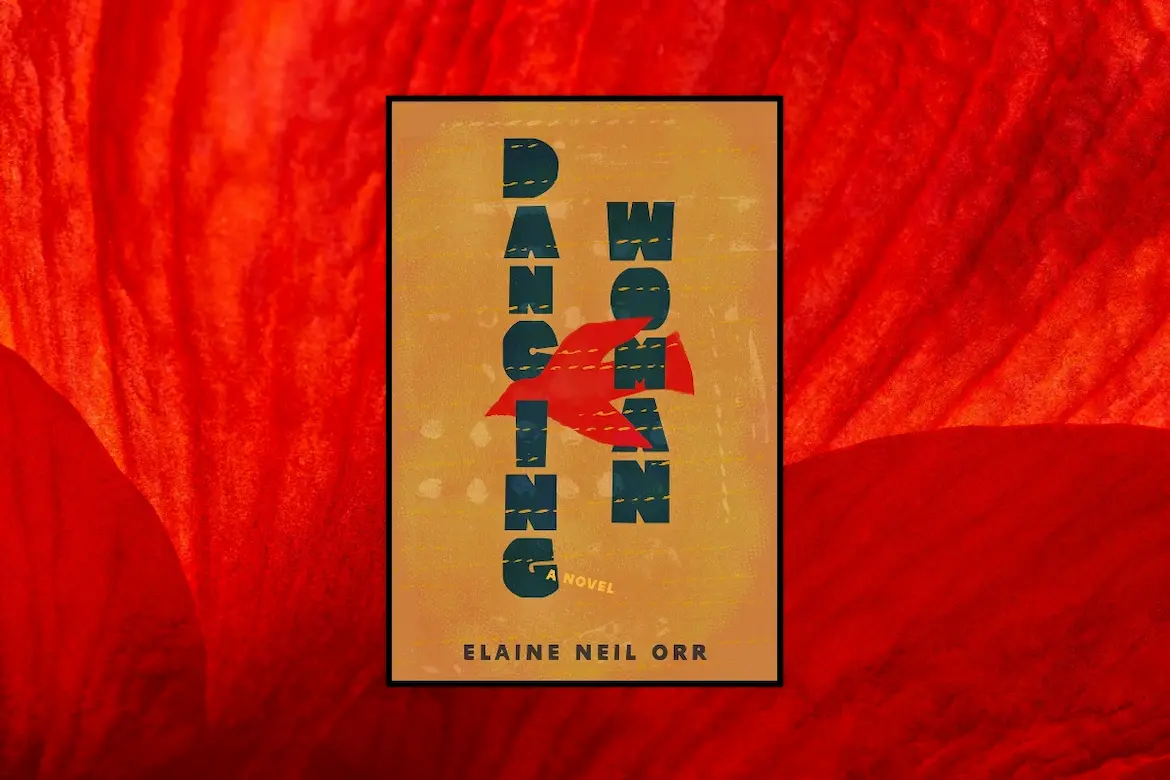Orr’s Dancing Woman follows Isabel and her husband, Nick, over the course of 3 years in 1960s Nigeria where they have landed due to Nick’s work with USAID
LitStack is happy to bring you Allie Coker’s review of Dancing Woman, a novel by Elaine Neil Orr. Enjoy!
In This LitStack Review of Dancing Woman
Finding a Rhythm | Self-Discovery in Dancing Woman by Elaine Neil Orr
The Path
You are a married woman living in a foreign country (as well as in a state of emotional free fall) while still too young to even truly know yourself yet. Daily, you fervently wish for a female god to commune with who would understand the nature of your soul and the struggles of womanhood. Then a charismatic stranger captures your attention, and you pull a stone goddess from the earth in your backyard—thus begins Elaine Neil Orr’s vibrant novel, Dancing Woman.
Isabel’s life lacks shape—trying to chase purpose through being a wife, becoming a mother, or even her burgeoning artistry has yielded no deep sense of meaning for her during the first 21 years of her life. Orr’s novel tracks Isabel and her husband, Nick, over the course of 3 years in 1960s Nigeria where they have landed due to Nick’s work with USAID. Orr’s lyrical prose and exacting eye for details root the story in this precise time and place making the reader feel as though they are traveling back to witness this story unfold.
The Turn
With practical parents who owned a small pharmacy back in the States, Isabel was a child prone to daydreaming and whimsy-seeking. She would wander the town unattended as a preteen and, in that way, met the woman who ended up teaching her how to paint for 4 years. Isabel is no longer a child. A spurned art student, accused at college of her work being “soulless,” who has since married Nick in lieu of continuing to paint and forge her own path, Isabel often feels bound too tightly by the traditions of family life, the customs of her surroundings, and the expectations of others.
When her loving but logical husband bails on their plans for Valentine’s Day, leaving her stranded at home, her American friends offer to drive her to the overnight party instead. Isabel jumps at the chance to wear the new dress she sewed especially for that evening and to dance to the riveting jazz sounds of Bobby Tunde, a talented, handsome Yoruba man.
Although Bobby has a wife and children already, inexplicable emotions bubble up during his conversation with Isabel after the party and they become intimate. He sees her “underground spirituality” and recognizes her as an artist. Upon returning home the next day, Isabel is intimate with Nick, so 8 months later when her water breaks, it’s a mystery who the father is—one that Orr builds up over the first third of the book.
Fourteen months into their tenure in Nigeria, Isabel tries to plant a lemon tree, but instead finds an ancient, small stone statue of a dancing woman that she immediately feels a connection to and wants to keep, even though she has no rightful claim to this cultural totem. Initially, she hides the dancing woman. Isabel has “become a woman of secrets” and a “bature” (white person) in her new home. She begins painting again and brings her precious dancing woman statue offerings of food, flowers, and other gifts— it has become Isabel’s idol.


Claiming Home
Although Isabel doesn’t miss America, she is so absorbed by her rich inner life that she doesn’t make the effort to connect with Nigerian culture and the concerns that surround her, unintentionally maintaining an emotional distance from the local population. Daniel, the house manager, is Tiv so when violence starts breaking out in his home region and Isabel asks if people are worried, he responds, “We Tiv are worried as we always are.” Daniel is also the first to tell her that the local radio station has announced the JFK assassination, meanwhile Isabel doesn’t bother to keep up with the happenings in her own backyard.
She often buys wares from neighboring villagers such as gum, nuts, and a bird to set free. As Isabel explores more cities- Lagos, Zaria, Kaduna, Kafanchan- and learns of the rich culture of the Nigerian peoples, her appreciation grows and her concern for those around her manifests itself into helping via savior mode- something that chafes the Nigerian people at first until they can decide for themselves if what she is offering is truly best for them.
Even as Isabel’s closest friends visit her and divulge the secrets that bring them shame, they are quick to put her in her place for overstepping, interfering, or being too self-interested at times. A man from the university has heard of Isabel’s possession of the “Nok” or dancing woman statue and pays a visit to say it will help with his research. He is Nigerian and when it becomes apparent to him that Isabel will not willingly part with the statue that’s become her muse any time soon, the man puts her in her place saying, “Mrs. Hammond. This figure will correctly be in our possession. You are only a visitor whereas this terra-cotta is from our ancestors.”
The View Inward
Isabel may be a chameleon to herself, changing with the wind, and prone to intuitive visions she hasn’t learned to decipher or trust yet, but she wants to be taken seriously as an artist and person. She longs for female mentorship, camaraderie, and inspiration. She wants a sense of purpose and belonging and adventure to thrill her life.
Orr has written such multi-faceted characters that the reader will forget that Isabel isn’t a real person they know. Irrationally jealous towards her husband at times, Isabel seems to love Nick best from a distance. But the affection she feels for Nick, Daniel, Bobby Tunde, and others is tested as disastrous events unfold and new joys are discovered in the wake of her self-exploration.
After the final page of this insightful novel, Dancing Woman, Orr’s readers are compelled to ask themselves, what sets a soul on fire? And who pays for the gas to burn?
~ Allie Coker
Dancing Woman Author Elaine Neil Orr

Elaine Neil Orr is a writer of fiction, memoir, and literary criticism. She was born in Nigeria; the American South is her second home. She writes richly about the natural world, complex human relationships, and spiritual longing. She has received awards from the National Endowment for the Humanities, the North Carolina Arts Council, and the Virginia Center for the Creative Arts. In 2016, she was Kathryn Stripling Byer writer-in-residence at Wesleyan College in Macon, Georgia. In addition to her books, her short stories and memoirs have appeared in The Missouri Review, Image, Shenandoah, and Blackbird, among other places.
You can connect with Elaine Neil Orr on their website, on Facebook and Instagram.
Other Titles by Elaine Neil Orr

Other LitStack Resources
Be sure and look at our other LitStack Reviews for our recommendations on books you should read, including reviews by Lauren Alwan, Allie Coker, Rylie Fong, and Sharon Browning.
Other Reviews by Allie Coker
As a Bookshop, Malaprop’s, BAM, Barnes & Noble, Audiobooks.com, Amazon, and Envato affiliate, LitStack may earn a commission at no cost to you when you purchase products through our affiliate links.





